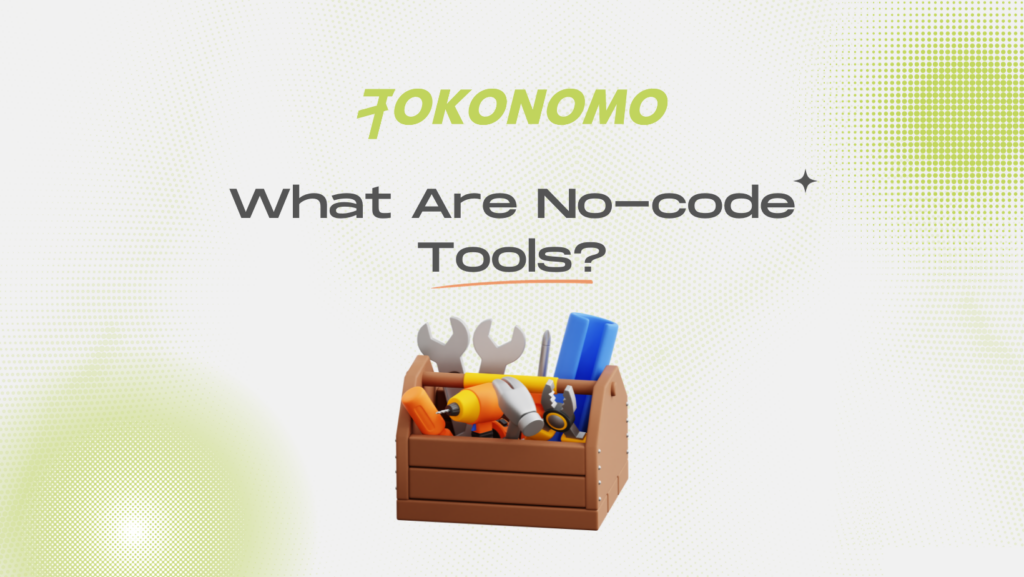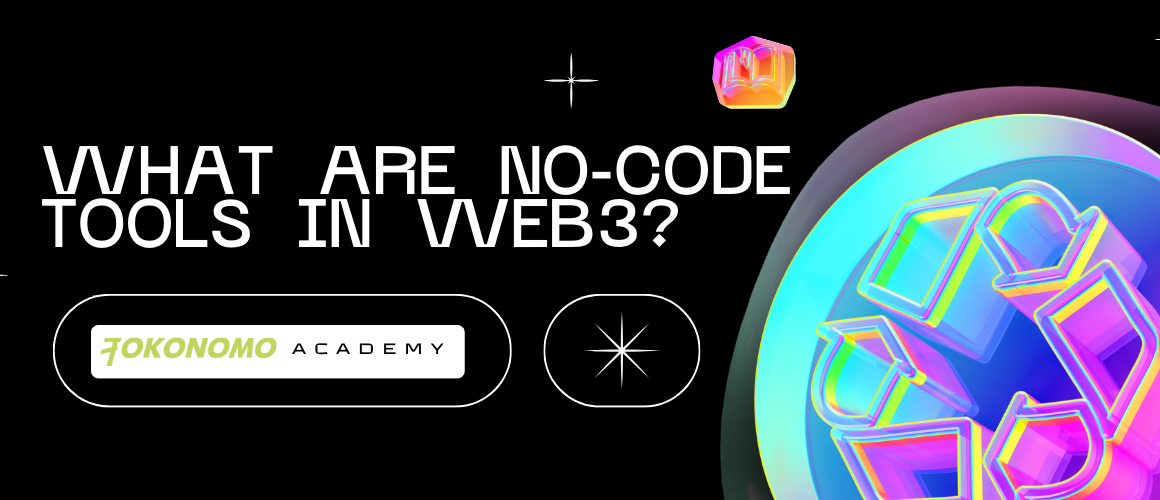In the rapidly evolving landscape of Web3 technologies, the emergence of no-code tools stands as a revolutionary force, reshaping the way individuals interact with and contribute to the decentralized web. As blockchain, decentralized finance (DeFi), non-fungible tokens (NFTs), and various other Web3 innovations continue to gain momentum, the accessibility and usability of these advancements become increasingly pivotal.
In this article, we embark on an exploratory journey into the realm of no-code tools within the context of Web3, unraveling the significance, functionalities, and implications of these tools in facilitating the creation, deployment, and management of decentralized applications (dApps) and smart contracts.
What Are No-Code Tools in Web3?
No-code tools serve as an empowering resource for individuals, granting them the capability to construct applications, and websites, and automate processes devoid of the necessity to engage in coding. These tools predominantly make use of a visual development environment, providing users with the ability to craft interfaces and workflows through the simple action of dragging and dropping various elements.


Within the realm of cryptocurrencies, no-code tools open up opportunities for individuals lacking technical coding skills to engage with and harness the power of blockchain technologies. These platforms furnish readily accessible interfaces and workflows, affording users the capacity to execute tasks that typically demand intricate coding expertise, such as the creation of smart contracts, the development of decentralized applications (DApps), the initiation of DeFi (decentralized finance) transactions, and more.
For example, a no-code platform could enable a user to establish a smart contract on the Ethereum network by inputting specific transaction details, such as involved parties and transaction conditions, without necessitating any coding knowledge. Likewise, it could facilitate users in crafting DApps, crypto trading bots, or yield farming operations by merely selecting options and specifying conditions.
Examples of Utilizing No-Code Tools in Web3
No-code tools within the realm of Web3 technology are playing a pivotal role in facilitating a diverse array of applications, thus enhancing accessibility to the decentralized web for individuals lacking technical expertise. Presented below are a few instances demonstrating their utility:
1. Decentralized Applications (DApps)
No-code platforms empower individuals lacking technical expertise to effortlessly develop decentralized applications (DApps) functioning on blockchain technology. These platforms allow users to seamlessly construct games, marketplaces, social networks, and various other applications without requiring any coding knowledge or skills.
2. Smart contracts
Users have the capability to channel both straightforward and intricate operations via smart contracts found on blockchain platforms such as Ethereum and BNB Smart Chain (BSC). The utilization of no-code tools further streamlines this process, enabling users to establish and articulate terms and conditions without the need for coding expertise.
3. Decentralized Finance (DeFi)
No-code platforms can be instrumental in facilitating the implementation of DeFi functionalities by enabling users to autonomously devise and execute their customized yield farming strategies, initiate liquidity mining schemes, or even swiftly prototype an entire DeFi protocol.
What Advantages Do No-Code Tools Offer?
Let’s delve deeper into a few of the unique advantages that no-code tools provide specifically within the expansive crypto landscape:
1. Accessible
No-code tools significantly reduce the barriers inherent in software development, thereby ensuring accessibility to technology creation for individuals, irrespective of their coding proficiency. These tools play a pivotal role in democratizing application development, granting empowerment to anyone aspiring to become a creator.
2. Efficient
The utilization of drag-and-drop features within no-code interfaces significantly expedites the design and development process. By obviating the necessity for extensive coding hours, these no-code tools have the potential to enhance development speed and productivity.
3. Cost Reduction
Through the reduction of dependence on specialized programmers, companies can significantly decrease development expenses. Moreover, the expeditious process of creating and updating applications using no-code tools necessitates and involves less utilization of resources.
4. User Friendly
No-code platforms, with their capacity for swift edits and updates, facilitate the rapid accommodation of business changes. In comparison to traditional programming, these platforms provide an unparalleled level of agility, empowering businesses to evolve and innovate at a much faster pace.
What Constraints Exist Within No-Code Tools?
Let’s take a closer examination and delve into a few of the distinctive limitations that are connected with the utilization of no-code tools:
1. Restricted Customization
Even though no-code tools present a diverse array of functions, their framework limitations might hinder meeting exceedingly specific or intricate requirements. In cases requiring extensive customization, traditional coding frequently stands as the most optimal choice.
2. Data Security Concerns
Because of the increased accessibility of the development environment, there exists a possibility of encountering security threats or experiencing data breaches if strict adherence to privacy standards is lacking or if the tool fails to inherently implement robust security measures.
3. Dependence on Vendor
Utilizing a no-code platform inevitably results in the entanglement of businesses with the selected vendor. Any potential issues arising from the platform, such as updates, alterations in pricing, or the unforeseen closure of the company, could profoundly affect the utilization and long-term viability of the created application.
4. Scalability Issues
Although no-code platforms demonstrate efficiency in managing small to medium-sized applications, they could encounter difficulties when tasked with projects that require substantial computational power or entail intricate management of extensive data sets.
Conclusion
Within the sphere of Web3, no-code tools have emerged as pivotal facilitators of innovation, significantly expanding the scope for wider involvement. These user-friendly tools significantly augment accessibility, empowering both individuals and entities to swiftly and effectively implement blockchain-oriented solutions. Consequently, this aids in fully harnessing the potential of decentralized technology.
Nevertheless, it’s imperative not to overshadow the limitations inherent in no-code solutions amidst their positive attributes. These limitations, spanning from constraints in customization to concerns regarding data security, necessitate consideration concerning conventional coding practices.
Ultimately, while no-code tools democratize blockchain’s capabilities to a broader audience, their deployment must align with a thorough assessment of potential risks and constraints. Therefore, their utilization should be integrated within a diversified approach to blockchain development, blending them with traditional coding methodologies, especially for intricate requirements.







